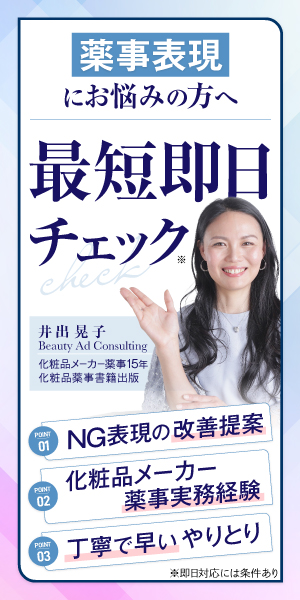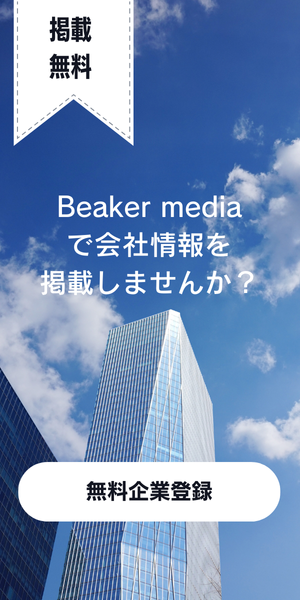表示名称成分詳細
クロルヒドロキシAl
成分番号(JP number): 551146
- INCI
- ALUMINUM CHLOROHYDRATE
- 定義(Description)
- 本品は、次の化学式で表される塩基性塩化アルミニウム錯体である。Dialuminium chloride pentahydroxide
- 日本の規制情報(Japanese regulation information)
- 中文inci(CN/中国名称)
- 氯化羟铝
- 中国の規制情報(Chinese regulation information)
- 【已使用化妆品原料目录(2021年版)】Maximum Historical Usage in Rinse-off Cosmetics(%): (none), Maximum Historical Usage in Leave-on Cosmetics(%): 40
- 韓国inci(KR/ハングル/성분명)
- 알루미늄클로로하이드레이트
- CAS No.
- 12042-91-0
- EC No.
- 234-933-1
- EUの規制情報(Restriction/Annex/Ref#)
-
原料情報
クロルヒドロキシAl / ALUMINUM CHLOROHYDRATE
クロルヒドロキシAlとは
クロルヒドロキシAlとは、金属塩の一つである塩化Alを電解することによって作られる、化学式Al₂(OH)₅Clで表される分子量が179.49の金属錯体です(1)
この成分が化粧品に配合される場合は、収れん作用、制汗、効果・作用についての補足を目的に配合されており、制汗製品、デオドラント製品、メイクアップ化粧品、ヘアカラー製品などに配合されています。
まず、収れん作用に関しては、この成分は陽イオン型収れん剤で汗腺の入り口にあるタンパク質を凝固・収縮させることで強力な収れん作用を示します(2, 3)。この作用を利用し、アストリンゼントローション、アフターシェービングローションなどに使われています。
そして、収れん作用により肌を引き締め、汗を抑制し、これによって化粧崩れを防止する目的で、ルースパウダー、パウダーファンデーションなどにも使用されています。
次に制汗については、クロルヒドロキシAlは1940年頃より制汗剤の有効成分として使われてきており、pHは酸性であるものの塩化AlよりpHが高い点や、衣類に対する損傷やヒト腋窩皮膚に対し刺激がとても少ないことから(4)、現在でも制汗製品、デオドラント製品などに一般的に多く使われています。
この成分の制汗メカニズムは、表皮内の汗管においてアルミニウムを含有する水酸化物のゲルが作られ、表皮内汗管が物理的に閉じることによって発汗の減少が起こるという様に考えられています(5-1)。
このメカニズム自体は、塩化Alとよく似ていますが汗腺を含んだ角質層をテープなどで剥がし、そこに塩化Alを塗布したところ汗腺の機能はほとんど回復しませんでした。これに対して、この成分を塗布すると半分まで汗腺が回復したため、このクロルヒドロキシAlは塩化Alよりも皮膚表面に近い場所で作用していると考えられています(5-2)。
最後に効果・作用についての補足については、金属塩であるこの成分は金属イオンと反応することによって発色する染毛剤の金属塩として配合されていることが報告されており(6)、濃染効果を目的にヘアカラー製品によく使われています。
この成分の安全性に関しては、1940年頃からの使用実績がある点やいくつかの試験データを下に条件下であれば、安全に使用できると一般的に考えられています。
まず皮膚刺激性および皮膚感作性に関しては、British Industrial Biological Research Associationの試験データより(7)、濃度25%以下でのアルミニウムの皮膚内への浸透と皮膚刺激はなしと報告があり、医薬部外品として配合上限が濃度2%に決められている点や、塩化Alと比較してpHが高く、腋窩皮膚に対しての刺激性もとても少ないと報告されている点などから、濃度2%以下では一般的に皮膚刺激性はほとんどないと考えられます。
そして、この試験データでは報告が見つかりませんが、古くから使われている成分で、その中で特に大きな皮膚感作に関する報告がないため、一般的に安全に使用できると考えられています。
次に眼刺激性に関しては、詳細なデータが見つかっていないため詳しいことが不明であるため、目や目の周りは避けての使用がおすすめだと言えます。
また、この成分には収れん作用があるため使う際には注意が必要であると示唆されています。
最後に発がん性に関しては、一時、アルミニウム化合物を含む脇用の制汗スプレーには乳房の近くで使用するため、頻繁に使うことによってアルミニウムが乳房の皮膚に吸収されて、エストロゲンの様な効果を発揮してしまう可能性があり、その結果として乳がんの発生に関わっている可能性があると指摘されました(8)。
しかし、2016年に公開されたNCI(National Cancer Institute:アメリカ国立がん研究所)の制汗剤及びデオドラント剤と乳がんに関するレビューによると、現時点での結果としてはアルミニウムを含む脇用の制汗剤また化粧品の使用によって乳がんのリスクを高めることを示す決定的な証拠がないと結論付けています(9)。
参考文献
(1) “Pubchem”(2020)「Aluminum chlorohydrate」, https://pubchem.ncbi.nlm.nih.gov/compound/Aluminum-chlorohydrate
(2) 田村 健夫, 他(1990)「陽イオン型収れん剤」香粧品科学 理論と実際 第4版,247-248
(3) 鈴木 一成(2012)「塩化ヒドロキシアルミニウム」化粧品成分用語事典2012,423-424.
(4) T. Govett, et al(1947)「Aluminum Chlorohydrate, New. Antiperspirant Ingredient」The American. Perfumer and Essential Oil Review(49),365-368.
(5-1,2) Karl Laden(1995)「アルミニウムクロルハイドレート」制汗剤とデオドラント,96-97.
(6) 資生ケミカル株式会社(2010)「染毛方法」特開2010-248103.
(7) A.B.G Lansdown(1973)「Production of epidermal damage in mammalian skins by some simple aluminium compounds」British Journal of Dermatology(89)(1),67-76.
(8) P.D. Darbre(2005)「Aluminium, antiperspirants and breast cancer」Journal of Inorganic Biochemistry(99)(9),1912-1919.
(9) National Cancer Institute(2016)「Antiperspirants/Deodorants and Breast Cancer」, https://www.cancer.gov/about-cancer/causes-prevention/risk/myths/antiperspirants-fact-sheet
クロルヒドロキシAlの配合目的
- 収れん作用
- 制汗
- 効果・作用についての補足
クロルヒドロキシAlの安全性情報
クロルヒドロキシAl(クロルヒドロキシアルミニウム)外原規2021規格の基準を満たした成分が収載される医薬部外品原料規格2021に収載されています。(1)
https://unicodesodorante.com.br/wp-content/uploads/2020/07/05.pdf
参考文献
(1)医薬部外品原料規格2021
(2)P.D. Darbre(2005)「Aluminium, antiperspirants and breast cancer」Journal of Inorganic Biochemistry(99)(9),1912-1919.
(3)National Cancer Institute(2016)「Antiperspirants/Deodorants and Breast Cancer」, https://www.cancer.gov/about-cancer/causes-prevention/risk/myths/antiperspirants-fact-sheet 2022年1月30日アクセス
(4)“All About 乳がん.Info”(-)「乳がん Q&A」, http://nyugan.info/allabout/qa/qa1_worry/qa1_10.html 2020年5月21日アクセス.
日本語論文
クロルヒドロキシアルミニウムの制汗効果に及ぼす共存成分の影響
佐野 智生 , 白江 航 , 尾本 百合子 , 長嶋 慎一 , 森垣 篤典 , 柿澤 恭史 , 池西 岳樹 日本化粧品技術者会誌 55(1), 45-51, 2021
土屋 結香 ファルマシア 54(7), 700-701, 2018
アラントインクロルヒドロキシアルミニウムによる接触皮膚炎の1例
山下 周子 , 須貝 哲郎 , 永尾 淳 , 田水 智子 Environmental dermatology : the official journal of the Japanese Society for Contact Dermatitis 8, 31, 2001-11-01
制汗消臭剤FM‐10のえき臭症に対する二重盲検交叉法による臨床評価
FM-10臨床研究班 皮膚 29(5), 889-898, 1987
四塩化炭素-水酸化アルカリ法を用いたクロルフェノール類のカルボキシル化反応による若干のクロルヒドロキシ安息香酸類およびその誘導体の合成
鈴木 仁美 [他] 日本化学雑誌 92(11), 1002-1005, 1971-11
四塩化炭素-水酸化アルカリ法を用いたクロルフェノール類のカルボキシル化反応による若干のクロルヒドロキシ安息香酸類およびその誘導体の合成
鈴木 仁美 , 佐脇 幹夫 , 野村 修三 , 先本 礼次 日本化學雜誌 92(11), 1002-1005, 1971
アルキルアミノビスヒドロキシプロパンスルホネートの合成とその性質
木本 三夫 , 根本 嘉郎 工業化学雑誌 68(11), 2077-2080, 1965
英語論文
Aluminum Chlorohydrate cosmetic 22件
[Deodorants and antiperspirants].
Martini MC.Ann Dermatol Venereol. 2020 May;147(5):387-395. doi: 10.1016/j.annder.2020.01.003. Epub 2020 Apr 2.PMID: 32248967
Gorgogietas VA, Tsialtas I, Sotiriou N, Laschou VC, Karra AG, Leonidas DD, Chrousos GP, Protopapa E, Psarra AG.J Mol Biochem. 2018;7(1):1-13.PMID: 30148119
Lindh JD, Bradley M.Am J Clin Dermatol. 2015 Oct;16(5):341-59. doi: 10.1007/s40257-015-0146-4.PMID: 26267423
In vitro sorption of aluminum complex to guinea pig stratum corneum.
Putterman GJ, Strassburger J, Fitzgerald JJ.J Invest Dermatol. 1981 Sep;77(3):319-24. doi: 10.1111/1523-1747.ep12482522.PMID: 7264366
If exposure to aluminium in antiperspirants presents health risks, its content should be reduced.
Pineau A, Fauconneau B, Sappino AP, Deloncle R, Guillard O.J Trace Elem Med Biol. 2014 Apr;28(2):147-150. doi: 10.1016/j.jtemb.2013.12.002. Epub 2013 Dec 19.PMID: 24418462
Pineau A, Guillard O, Favreau F, Marrauld A, Fauconneau B.J Inorg Biochem. 2012 May;110:21-6. doi: 10.1016/j.jinorgbio.2012.02.013. Epub 2012 Feb 25.PMID: 22459170
de Ligt R, van Duijn E, Grossouw D, Bosgra S, Burggraaf J, Windhorst A, Peeters PAM, van der Luijt GA, Alexander-White C, Vaes WHJ.Clin Transl Sci. 2018 Nov;11(6):573-581. doi: 10.1111/cts.12579. Epub 2018 Jul 27.PMID: 30052317
[Antiperspirants and deodorants--ingredients and evaluation].
Lukacs VA, Korting HC.Derm Beruf Umwelt. 1989 Mar-Apr;37(2):53-7.PMID: 2656175
Potentiometric/turbidometric titration of antiperspirant actives.
Johnston CT, Hem SL, Guenin E, Mattai J, Afflito J.J Cosmet Sci. 2003 Mar-Apr;54(2):113-8.PMID: 12715089
Farasani A, Darbre PD.J Inorg Biochem. 2015 Nov;152:186-9. doi: 10.1016/j.jinorgbio.2015.08.003. Epub 2015 Aug 15.PMID: 26319584
Guillard O, Fauconneau B, Favreau F, Marrauld A, Pineau A.Toxicol Mech Methods. 2012 Apr;22(3):205-10. doi: 10.3109/15376516.2011.610386. Epub 2011 Sep 30.PMID: 21962178
New oil-gelling agents for cosmetics: formation mechanism of oil gels.
Fukasawa J, Tsutsumi H, Ishida A.Int J Cosmet Sci. 1989 Aug;11(4):153-65. doi: 10.1111/j.1467-2494.1989.tb00505.x.PMID: 19456947
Yuan S, Vaughn J, Pappas I, Fitzgerald M, Masters JG, Pan L.J Cosmet Sci. 2015 Mar-Apr;66(2):95-111.PMID: 26454974
Effective axillary malodour reduction by polyquaternium-16-containing deodorants.
Traupe B, Fölster H, Max H, Schulz J.Int J Cosmet Sci. 2017 Apr;39(2):141-148. doi: 10.1111/ics.12358. Epub 2016 Sep 13.PMID: 27506727
Welzel J, Grüdl S, Welss T, Claas M, Sättler A, Förster T, Banowski B.Int J Cosmet Sci. 2021 Apr;43(2):181-190. doi: 10.1111/ics.12679. Epub 2021 Jan 1.PMID: 33259130
Templeton AJ, Ribi K, Surber C, Sun H, Hsu Schmitz SF, Beyeler M, Dietrich D, Borner M, Winkler A, Müller A, von Rohr L, Winterhalder RC, Rochlitz C, von Moos R, Zaman K, Thürlimann BJ, Ruhstaller T; Swiss Group for Clinical Cancer Research (SAKK) Coordinating Center.Breast. 2014 Jun;23(3):244-9. doi: 10.1016/j.breast.2014.02.005. Epub 2014 Mar 20.PMID: 24656636
Keyhani R, Scheede S, Thielecke I, Wenck H, Schmucker R, Schreiner V, Ennen J, Herpens A.Int J Cosmet Sci. 2009 Jun;31(3):183-92. doi: 10.1111/j.1468-2494.2009.00489.x.PMID: 19302512
A preliminary study of the dermal absorption of aluminium from antiperspirants using aluminium-26.
Flarend R, Bin T, Elmore D, Hem SL.Food Chem Toxicol. 2001 Feb;39(2):163-8. doi: 10.1016/s0278-6915(00)00118-6.PMID: 11267710
Darbre PD, Bakir A, Iskakova E.J Inorg Biochem. 2013 Nov;128:245-9. doi: 10.1016/j.jinorgbio.2013.07.004. Epub 2013 Jul 12.PMID: 23896199
Chen X, Gasecka P, Formanek F, Galey JB, Rigneault H.Br J Dermatol. 2016 Apr;174(4):803-12. doi: 10.1111/bjd.14292. Epub 2016 Jan 9.PMID: 26574296
The efficacy of a protective cream in a real-world apprentice hairdresser environment.
Perrenoud D, Gallezot D, van Melle G.Contact Dermatitis. 2001 Sep;45(3):134-8. doi: 10.1034/j.1600-0536.2001.045003134.x.PMID: 11553137
Influence of climatic conditions on antiperspirant efficacy determined at different test areas.
Brandt M, Bielfeldt S, Springmann G, Wilhelm KP.Skin Res Technol. 2008 May;14(2):213-9. doi: 10.1111/j.1600-0846.2007.00282.x.PMID: 18412565
Interventions for preventing occupational irritant hand dermatitis.
Bauer A, Schmitt J, Bennett C, Coenraads PJ, Elsner P, English J, Williams HC.Cochrane Database Syst Rev. 2010 Jun 16;(6):CD004414. doi: 10.1002/14651858.CD004414.pub2.PMID: 20556758 Updated. Review.
von Grote EC, Palaniswarmy K, Meckfessel MH.J Drugs Dermatol. 2016 Dec 1;15(12):1504-1510.PMID: 28095574 Review.
Sakhawoth Y, Dupire J, Leonforte F, Chardon M, Monti F, Tabeling P, Cabane B, Botet R, Galey JB.Sci Rep. 2021 Mar 18;11(1):6376. doi: 10.1038/s41598-021-85691-8.PMID: 33737654 Free PMC article.
Circadian rhythms in axillary skin surface pH.
Burry J, Coulson HF, Roberts G.Int J Cosmet Sci. 2001 Aug;23(4):207-10. doi: 10.1046/j.1467-2494.2001.00092.x.PMID: 18498460
Wrinkling Measurement of the Mechanical Properties of Drying Salt Thin Films.
Ferretti GL, Nania M, Matar OK, Cabral JT.Langmuir. 2016 Mar 8;32(9):2199-207. doi: 10.1021/acs.langmuir.5b04488. Epub 2016 Feb 24.PMID: 26907458 Free article.


